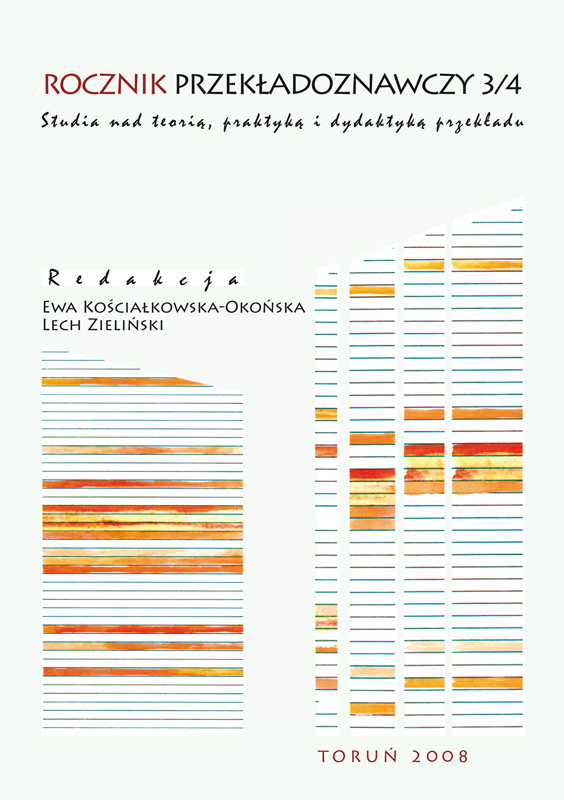Stylometria komputerowa w służbie tłumacza (na przykładzie własnych przekładów)
DOI:
https://doi.org/10.12775/RP.2008.012Słowa kluczowe
stylometria komputerowa, ewaluacja przekładu, błąd tłumaczeniowyAbstrakt
Artykuł przedstawia zastosowanie metod stylometrii komputerowej (analizy policzalnych elementów stylu) w stylistycznych badaniach porównawczych oryginału i przekładu literackiego. Wskazuje – na przykładzie własnych przekładów autora – jak pewne różnice stylistyczne w tekście oryginalnym mogą zostać zachowane lub przeciwnie – zaburzone, na podstawie świadomej lub nieświadomej decyzji tłumacza.
Bibliografia
Burrows, J. F., 1987, Computation into Criticism: A Study of Jane Austen’s Novels and an Experiment in Method, Oxford.
Burrows, J. F., 1994, „Tiptoeing into the Infinite: Testing for Evidence of National Differences in the Language of English Narrative”, [w:] Research in Humanities Computing, s. 1–33.
Busa, R., 1995, Informatica e scienze umane, Roma.
Connors, L., 2006, „Combining Cognitive Stylistics and Computational Stylistics”, Digital Humanities, Paris.
Hockey, S., 1980, A Guide to Computer Applications in the Humanities, Baltimore.
Hoover, D. L., 2002, „New Directions in Statistical Stylistics and Authorship Attribution”, [w:] Proc. ALLC/ACH, s. 57–60.
Kenny, A., 1978, The Aristotelian Ethics, Oxford.
Lutosławski, W., 1897, The origin and growth of Plato’s logic: with an account of Plato’s style and of the chronology of his writings, London.
McKenna, W. i in., 2000, „Beckett’s Trilogy: Computational Stylistics and the Nature of Translation”, [w:] Revue informatique et statistique dans les sciences humaines, s. 128.
Morton, A. Q., 1966, Paul, the Man and Myth, Boston.
Mosteller, F., Wallace, D., 1964, Inference and Disputed Authorship: the Federalist Papers, Reading.
Rybicki, J., 2006, „Can I Write like John le Carre?”, Digital Humanities, Paris.
Rybicki, J., 2006, „Character Idiolects in Henryk Sienkiewicz’s Trilogy and its Two English Translations”, [w:] Literary and Linguistic Computing, Oxford, s. 91–103.
Schreibman, S. i in., 2004, A Companion to Digital Humanities, Oxford.
Tabakowska, E., 1995, „Przekład a językoznawstwo kognitywne”, [w:] Mała encyklopedia przekładoznawstwa, U. Dąmbska-Prokop (red.), Częstochowa.
Pobrania
Opublikowane
Numer
Dział
Statystyki
Liczba wyświetleń i pobrań: 1610
Liczba cytowań: 0



